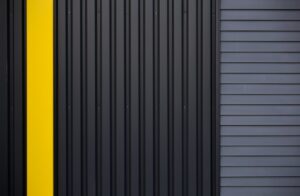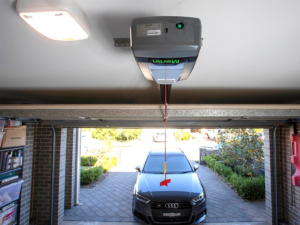Most Australian homes rely on a garage door every single day, yet few owners think about it until something jams, squeaks or fails altogether. When that moment arrives, the first question is always the same: should you patch it up or bite the bullet and install a brand-new door? In 2025 the decision has become more complex than simply comparing a quick invoice to a larger one. Rising material costs, tighter safety standards and a hotter property market now mean that every dollar spent on a garage door carries a measurable impact on household value, insurance and compliance. This guide unpacks all the moving parts so you can decide, confidently and in plain numbers, whether to repair or replace your garage door in today’s Australia.
How Garage Doors Age in Australian Conditions
A typical garage door in Australia is expected to last between fifteen and twenty years, yet that lifespan can shrink dramatically once you factor in local climate. Coastal suburbs from Cairns to Cottesloe bombard steel panels with salt spray that accelerates corrosion. Inland regions such as Alice Springs hit doors with relentless ultraviolet radiation that degrades paint and rubber seals. Cyclone-prone areas in Far North Queensland and the Top End subject the tracks, bracing and motors to extreme wind loads that older models were never designed to handle. Even comparatively gentle southern cities like Hobart experience expansion and contraction cycles that loosen fasteners over time.
Age also matters. Springs lose tensile strength after roughly ten thousand cycles, which for a busy household can occur in under seven years. Motors manufactured before 2015 rarely include modern soft-start logic or progressive auto-reverse sensors. Tracks designed to the 2004 edition of the National Construction Code (then the Building Code of Australia) may not meet contemporary wind resistance benchmarks introduced in NCC 2022. When you combine environmental stress with design obsolescence, the line between a feasible repair and an inevitable replacement starts to appear well before a door reaches the end of its nominal lifespan.
Understanding the True Cost of Repairs
Repair work looks attractive because the upfront outlay is modest and the turnaround can often be achieved within a single visit. Yet repair invoices vary widely depending on the failed component, the need for licensed trades and any compliance testing required after the job. The following table shows typical 2025 pricing drawn from metropolitan service data across Sydney, Brisbane, Melbourne and Perth. All amounts include GST.
| Common repair item | Average labour time | Typical 2025 price range |
|---|---|---|
| Minor track realignment and lubrication | 30–45 minutes | $150–$300 |
| Torsion spring replacement (single door) | 1.5–2 hours | $200–$400 |
| Sectional panel replacement (per panel) | 1 hour plus material lead time | $300–$500 |
| Motor capacitor swap | 40 minutes | $180–$250 |
| Full motor rebuild with gearbox | 2–3 hours | $450–$650 |
| Safety sensor installation upgrade | 1 hour with electrician sign-off | $250–$500 |
Those numbers tell only half the story. Each repair must bring the door back to compliance with Australian Standard AS/NZS 4505:2012 and any state electrical legislation if the unit is automated. Should the technician discover that the tracks lack sufficient wind bracing or the opener fails modern obstruction tests, a supplementary rectification becomes mandatory. That can multiply the initial quote or push the door squarely into replacement territory. Repairs also carry a shorter warranty, usually one year on parts and labour, while most new door packages extend coverage to five, ten or even fifteen years.
What Goes Into the Price of a Full Replacement
Replacement cost is straightforward to understand yet easy to underestimate. The door itself is only one component of the final bill. Removal of the existing unit, disposal fees, structural framing tweaks, new opener hardware, smart-home integration and council paperwork all stack up. The table below summarises 2025 supply-and-install pricing observed in capital cities and major regional centres.
| Door style and typical material | Base door price | Installed price with standard motor | Installed price with premium smart motor |
|---|---|---|---|
| Single roller door, Colorbond steel | $700–$1,200 | $1,100–$1,900 | $1,400–$2,500 |
| Single sectional door, insulated steel | $1,100–$2,000 | $1,600–$2,800 | $2,000–$3,500 |
| Double sectional door, insulated steel | $1,900–$3,200 | $2,800–$4,500 | $3,400–$5,800 |
| Single tilt door, timber veneer | $1,500–$2,800 | $2,000–$3,300 | $2,400–$3,900 |
| Custom aluminium panel-lift door, cyclone rated | $3,000–$4,500 | $4,200–$6,800 | $4,800–$7,600 |
Prices climb further if the opening needs widening, if the property falls within a bushfire attack level zone or if owners select architectural cladding such as western red cedar. On the other hand, many suppliers discount packages during winter months when installation demand drops. Rebates also exist in South Australia, Victoria and New South Wales for doors that meet defined thermal performance benchmarks, effectively shaving up to $400 from the invoice.
Comparing Cost and Value Side by Side
To judge value properly we must compare not only cash spent but the benefits accrued. A repair offers immediate restoration of function with minimal downtime. A replacement delivers compliance peace of mind, lower maintenance appetite, improved energy performance and often a tangible uplift in property appeal. The next table models a representative scenario for a ten-year-old double sectional door in Brisbane.
| Factor | Repair scenario (replace springs and motor) | Replacement scenario (new insulated sectional door) |
|---|---|---|
| Cash outlay year one | $900 | $4,300 |
| Warranty coverage | 12 months | 10 years parts, 5 years labour |
| Expected further repairs over decade | Three additional service calls, approx. $1,200 total | One minor service, $250 |
| Compliance risk under NCC 2022 and QLD Electrical Safety Regulation 2024 | Moderate to high; auto-reverse threshold may fail future audit | Low; fully compliant to 2025 standards |
| Annual energy loss through non-insulated panels | Estimated 400 kWh | Estimated 100 kWh |
| Estimated property value impact at 2030 sale | Neutral | Positive, plus curb appeal |
Over a ten-year horizon the repair path totals around $2,100 in direct costs and carries the lingering risk of an abrupt full failure. The replacement path costs twice as much upfront yet levels out to roughly the same figure by year six, after which it saves money and adds marketability. This dynamic mirrors the old “fifty-percent rule” used in property management: if a repair approaches half the cost of replacement, new is usually the smarter economic choice.
The Regulatory Edge: Why Compliance Matters
Australia’s regulatory environment has tightened dramatically in recent years with the full adoption of NCC 2022, the Electrical Safety and Other Legislation Amendment Regulation 2024 in Queensland and similar updates in Victoria and New South Wales. These instruments elevate garage doors from simple mechanical devices to safety-critical building elements.
Under the Work Health and Safety Act 2011, a homeowner who engages a contractor becomes a “person conducting a business or undertaking” for the duration of the job. That imposes a legal duty to ensure any plant or structure, your garage door included, is safe once the tradesperson leaves. Should a repair leave the opener without a compliant photo-electric beam or fail to satisfy the door balance test specified in Clause 5.3 of AS/NZS 4505, insurance may refuse a claim after an accident. Non-compliance penalties can reach $500,000 for corporations and well into six figures for individuals in cases of reckless conduct. A brand-new door, supplied and installed by a licensed technician, automatically arrives with certificates, test sheets and an electrical compliance form that collectively close that liability loop.
The Decision Framework: Repair or Replace
Every home is unique, yet practical guidelines help break the deadlock. First assess age. Doors under eight years old and motors under five often justify repair because major components still have life ahead of them. Next calculate the repair quote as a ratio of replacement cost. If the figure exceeds thirty percent and the door is already more than halfway through its expected lifespan, replacement starts to deliver better value. Consider frequency too. If you have called a technician twice in the past twelve months, history suggests more calls are coming.
Finally weigh externalities. Houses within 500 metres of the ocean, dwellings in BAL-rated bushfire zones or properties planning an imminent sale lean toward replacement because compliance upgrades and visual appeal carry extra weight. Conversely, a short-term rental property or a garage slated for demolition within five years might justify another repair even at a higher percentage cost.
Real World Scenarios Across Australia
Take Amelia and Josh in Geelong. Their twelve-year-old tilt door jammed before an AFL weekend. A $380 quote covered a torsion spring and minor track grind. Replacement would have cost $2,800. Because the mechanism had not been serviced in six years and parts were already obsolete, they looked at the five-year outlook. Their plan to list the house in 2027 swung the decision toward a contemporary Colorbond sectional unit. The new door, installed for $3,200 with a smart opener, earned a listing photo that the agency used in marketing brochures and arguably lifted offers by more than the purchase price.
Up in Townsville, Mark’s roller door motor failed two months after Cyclone Kirrily. A repair would have run to $480 for a new circuit board. However, the door itself had pre-2007 wind locks and could not pass current C-Cyclonic tests. His insurer warned that future claims might be rejected without an upgrade. Mark accepted a $2,900 replacement quote for a cyclone-rated roller door and received a premium reduction of $92 per year thereafter.
In suburban Perth, retiree Lynette faced a different calculus. Her quiet cul-de-sac sees little crime, and her sectional door is only six years old. A snapped cable cost $240 to swap out and came with a fresh twelve-month warranty. Because the rest of the system remains less than half-way through its design life, she banked the saving and booked a preventive service for the following summer. Her case highlights that repair can be the financially prudent answer when the numbers fall below critical thresholds.
Maximising Long-Term Value After You Decide
Once you choose a path, the next steps either protect the investment or erode it. If you repair, insist on genuine OEM parts and capture all paperwork for future reference. Schedule a professional tune-up every twelve months and keep a log. Lubricate hinges and tracks quarterly with a silicone-based spray, and test the auto-reverse function monthly by placing a 50 mm timber block in the door’s path.
If you replace, use a licensed installer who issues a Form 16 or equivalent certificate. Opt for insulated panels if you live in a climate zone with hot summers or chilly winters, because the incremental cost usually pays back within four or five years through energy savings. Register your motor with the manufacturer to extend warranty perks, and link the opener to a smart-home platform for remote monitoring. Finally, make sure to update your home insurance schedule with the new replacement value so you capture the full benefit of your upgrade.
Frequently Asked Questions for 2025
Many owners still ask whether parts shortages will drive prices higher. The broad consensus among major suppliers is that steel and aluminium costs have stabilised following the pandemic spike, yet electric motor assemblies remain volatile due to semiconductor demand. Planning work outside peak spring and early summer months can still unlock better labour rates. Others worry about noise levels. Modern belt-drive openers are roughly fifty percent quieter than chain-drive motors fitted to most doors before 2012, a factor that can improve internal living comfort and neighbour relations. Finally, in bushfire zones, questions arise about compliance. BAL-rated garage doors must now include ember-proof seals and stainless mesh weep holes, features that typically add eight to ten percent to the base price but can be the difference between full coverage and a denied claim.
Final Word
Choosing whether to repair or replace your garage door in Australia has never carried more financial, legal and lifestyle weight. The quick fix provides undeniable short-term relief, yet escalating compliance demands, energy prices and real estate competition mean that replacement can pay for itself quicker than many owners believe. The key is to approach the question methodically: audit the door’s age and condition, obtain a transparent quote for both options, check the ratio against long-term value, and account for the regulatory landscape that governs modern garage doors. When you do, the decision often reveals itself with clarity, letting you protect your home, your safety and your wallet in equal measure.






